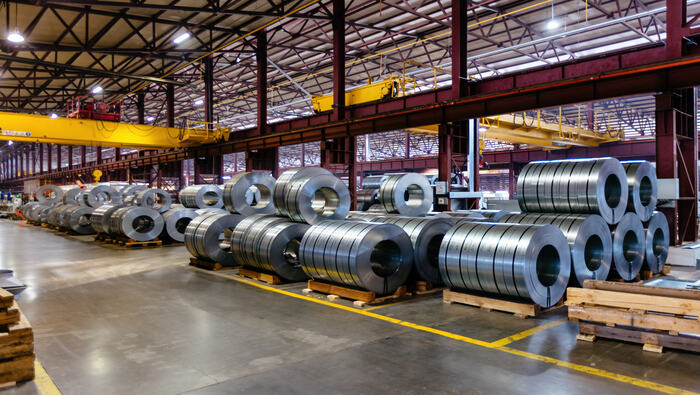In 2023, plate demand has strengthened in China but stayed sluggish in much of the rest of the world. Looking ahead for 2024, we expect demand growth will shift away from China to other major markets, and a rebalancing of the current oversupplied market will help to support a recovery in margins. Concerns over material origins will continue to shape global plate trade.

Author Yusu Mao
Analyst View profile
Demand growth will shift away from China
While 2023 has been a strong year for plate demand in China, the rest of the world has been facing a slow return to normality. We forecast that in 2024, demand will recover in most of the major markets outside China after the pullback in 2022–23, while Chinese demand will contract, following the country’s ongoing economic transition towards consumption-led growth.

End-use sectors have performed differently in 2023, with a sharp decline in construction-related demand and robust demand from shipbuilding and energy sectors. Going into 2024, we expect that both the Fed and ECB will begin to cut interest rates, which will lead to a gradual resumption in construction activity in Europe and infrastructure demand in the USA. In Northeast Asia, construction activity that has been delayed by the labour shortage and housing slump will also slowly come back, supporting demand recovery in the region.
Prices will be lower y/y, but margins will recover
Plate prices have been falling for most of the second half of 2023, with poor demand and abundant supply. We expect prices will rebound from the current low levels, starting in Asia, then in Europe and the USA. Nevertheless, the average yearly plate price is expected to be lower y/y in 2024 with a lower cost base, while margins will recover in most markets along with reduced supply and improvements in demand.

Low-cost supply will be less viable for some regional buyers
There is no shortage of plate supply. However, there have been growing concerns over material origins, which have effectively reduced the list of buying options for some regional buyers. We believe some of the key themes will continue to shape the plate trade flow in 2024, and low-cost supply will become less viable to the global market.
- Sanctions will keep EU buyers out of reach for Russian exports;
- Some buyers tend to decouple from China’s supply with geopolitical considerations;
- Japanese exports will be restricted by reduced domestic capacity and shift towards high-performance products.

Risks remain to our forecasts
- Stimulus in China presents upside risks to our demand and price forecast, if the demand boost to infrastructure development is stronger than expected;
- China could enforce production cuts beyond what the market is expecting, which also presents upside risks to prices;
- Further interest rate hikes present downside risks to plate demand in the construction and infrastructure sectors.

Author Yusu Mao
Analyst View profile